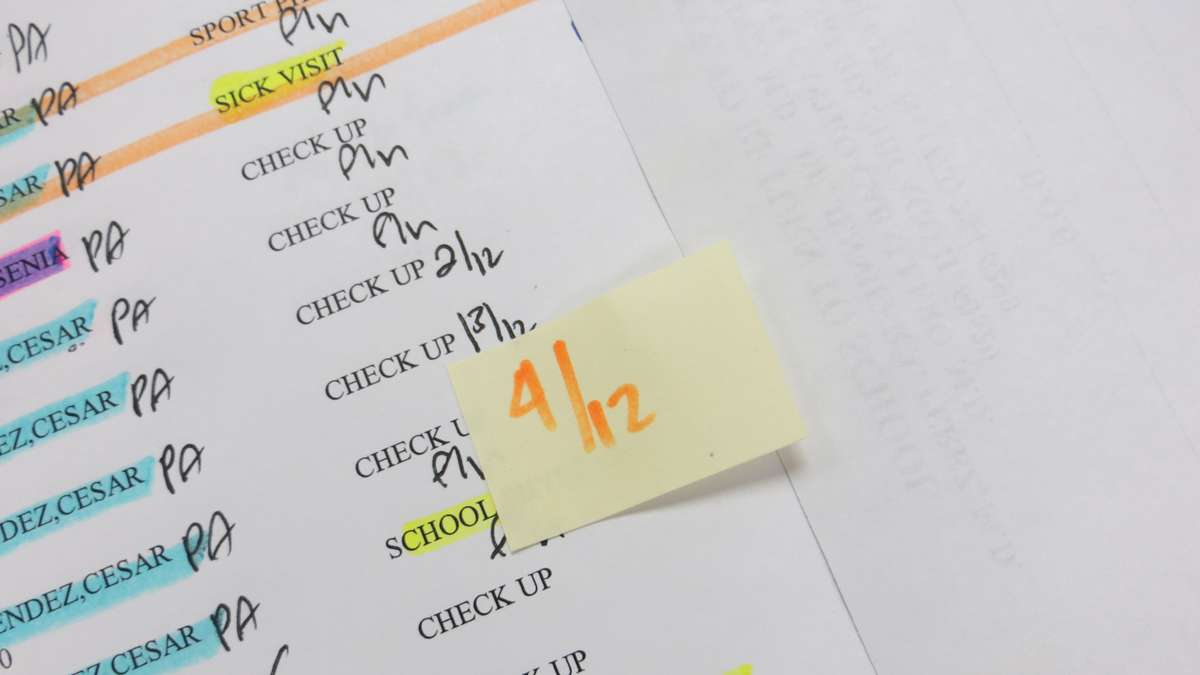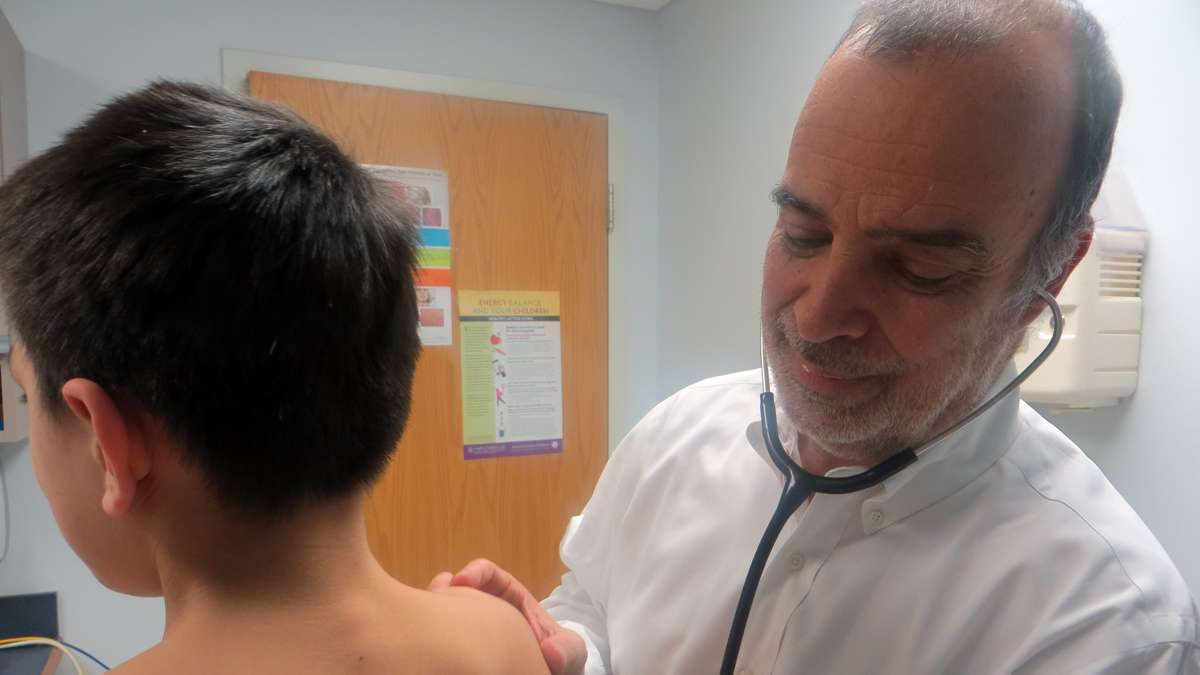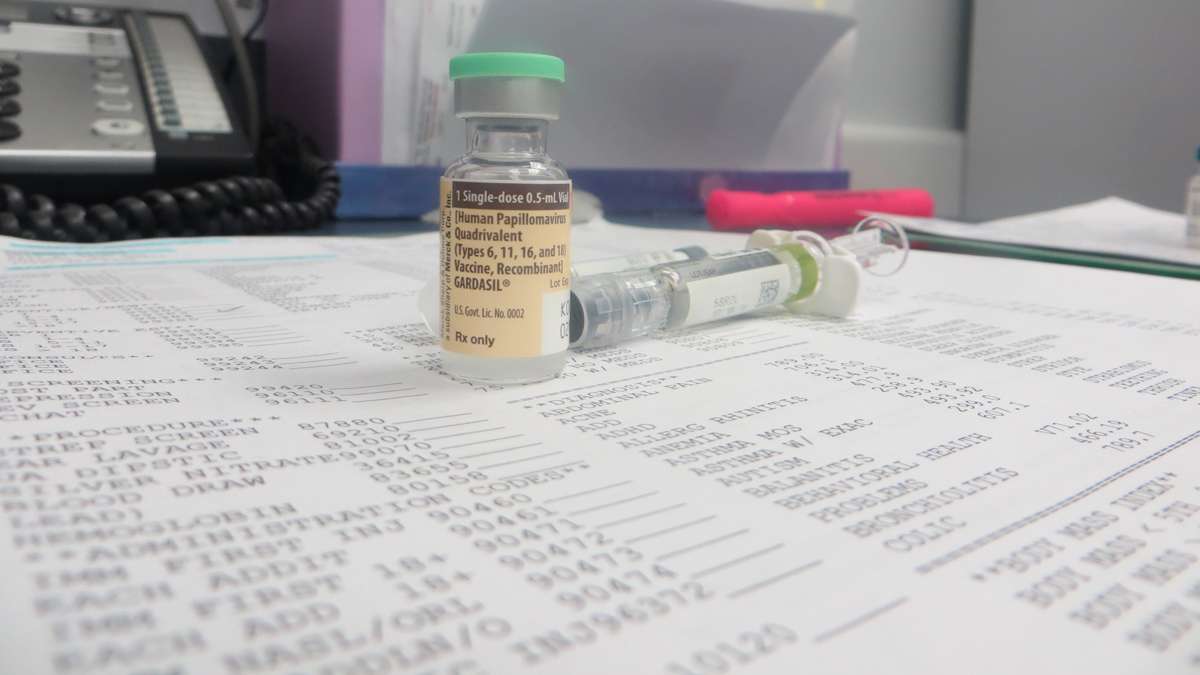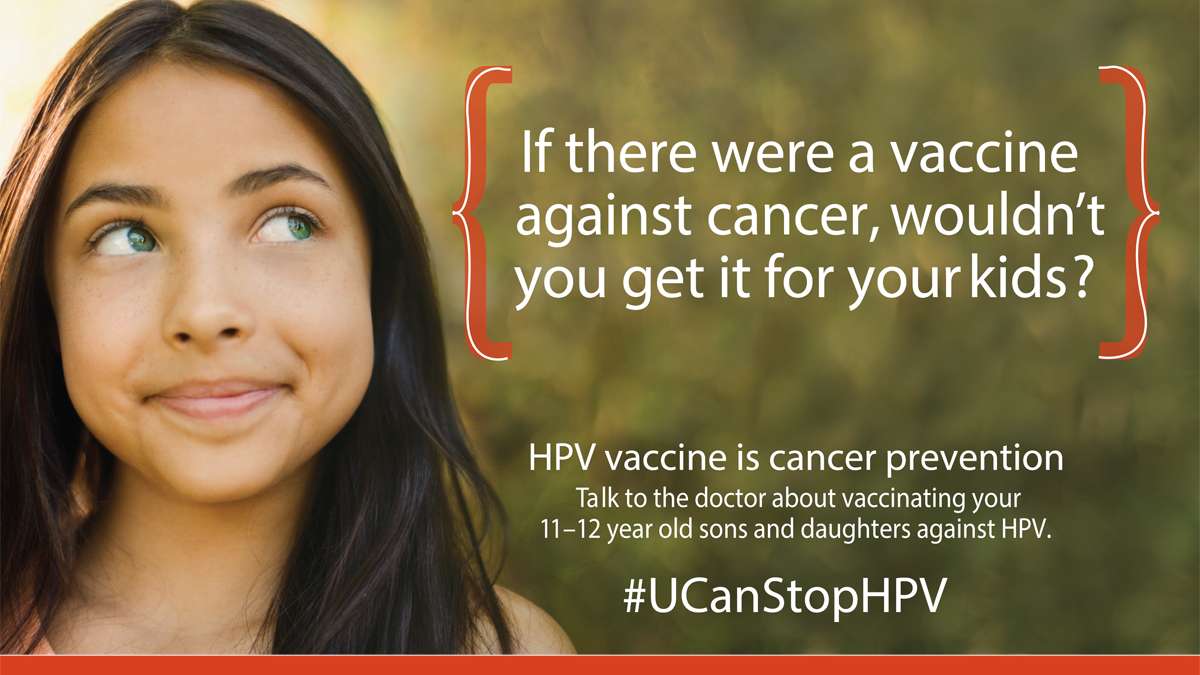Teaching survival methods to freelance journalists in combat zones
ListenAn organization stages mock battles in hopes of helping freelance journalists, who put themselves in harm’s way, learn to save their own lives.
It’s a Thursday afternoon in the Bronx, and the hot summer sun beats down on a small courtyard behind a brick building. Two bodies lay facedown, covered in blood. A few yards away are two more bodies, not moving. Smoke billows around them, and the air is full of the chaotic sounds of helicopter blades, gunfire, and crying babies. Two young men run to the bodies and crouch beside them. One wears body armor labeled “PRESS” in large, white, capital letters.
It’s the fourth day of training for RISC—or Reporters Instructed in Saving Colleagues—a program that trains journalists in simple lifesaving procedures for use in war zones.
The bodies are teaching dummies and the blood, well that was mixed up in milk jugs by the instructors a few hours earlier. But the stress infusing the courtyard? That’s 100 percent real.
Lead instructor Sawyer Alberi explains the point of the exercise: “What happens, when there’s any type of stressful event is that your brain kind of looks for a script to follow or a memory of what to do. And if you don’t have any memories, it falls on horrible things like TV shows we’ve watched or stupid friends we’ve had or our great-grandmother, who used to do something that is no longer appropriate. And so what happens here is that these people get exposed to a certain degree of training—what they should do in those moments—and their brain will come back to it.”
Alberi recently retired from a long military career that included working as a flight medic in Iraq and at an aid station in Afghanistan, so she knows exactly what journalists will be up against on the battlefield.
“I frequently get emails back from my students who say, when something bad happened, I was doing it, and I could hear your voice in my head,” she said. “Their brain has a place to go. And if it doesn’t, they’re just going to panic. And I think that’s an important thing.”
RISC was developed by Sebastian Junger, author of The Perfect Storm and a longtime war correspondent. He started the program after his colleague and friend Tim Hetherington was killed in combat in Libya.
“[Tim] bled out from a wound that wasn’t necessarily mortal,” remembered Junger, “but none of the freelance journalists around him knew what to do to try to save his life. So I decided after his death to get out of war reporting and start an organization that would train freelance, experienced war reporters in lifesaving techniques on the battlefield.”
The course is specifically for freelancers, who don’t have a TV network or big newspaper behind to provide training before they go, or health coverage when they return.
“Many people don’t understand that most of the real frontline war reporting is done by freelancers,” said Junger. “When you watch the news in the evening, some of it’s coming from regular paid correspondents for network or cable news, but even their material is often taken from freelance sources who really go unnamed and unacknowledged.”
The RISC course is four days long, and it’s funded by donations. It’s free for trainees, including their lodging. Two hundred and thirty journalists—mostly photographers—have taken the course in the U.S. and abroad since its inception in 2012. Three of its alumni have already died in action.
The teaching focuses on stopping the four most common preventable causes of death on the battlefield: bleeding out, blocked airways, hypothermia, and tension pneumothorax (chest and lung injuries).
“What we really need to make sure these journalists understand,” said Alberi, “is that they have to stop the bleeding. And if they can do that, they can actually save a life and pull someone from the jaws of death.”
The students devote a fair amount of time to learning this particular skill. They work on supermarket chickens, on long white tables, packing the squirting blood vessels with bandages. It’s just one of the many skills they’ll learn to perform efficiently in the four days.
After all, they may need to do it on a person one day, halfway around the world. Or they may be a little closer to home.
“A lot of the stuff we’re learning here is applicable in protest situations and then in that horrible, spur of the moment, inner-city violence,” says Charlie Mostoller, a Philadelphia-based photographer. “A lot of the people in this class, even if they don’t go off to a conflict zone, will be much more able to provide help when things hit the fan.”
Sawyer Alberi started thinking about creating this training when she saw that journalists, contractors, and other civilians in war zones were ill-prepared with first aid skills.
“To me it’s really important to make sure that all these freelance journalists get the chance to save themselves,” she said. “No one should go into a war zone without the ability to save themselves or the people around them.”
Thanks to her and her colleagues at RISC, another crop of journalists will be a little bit safer now, as they go out to bring the news of a sometimes violent world into the calm sanctuary of our living rooms.
WHYY is your source for fact-based, in-depth journalism and information. As a nonprofit organization, we rely on financial support from readers like you. Please give today.
























